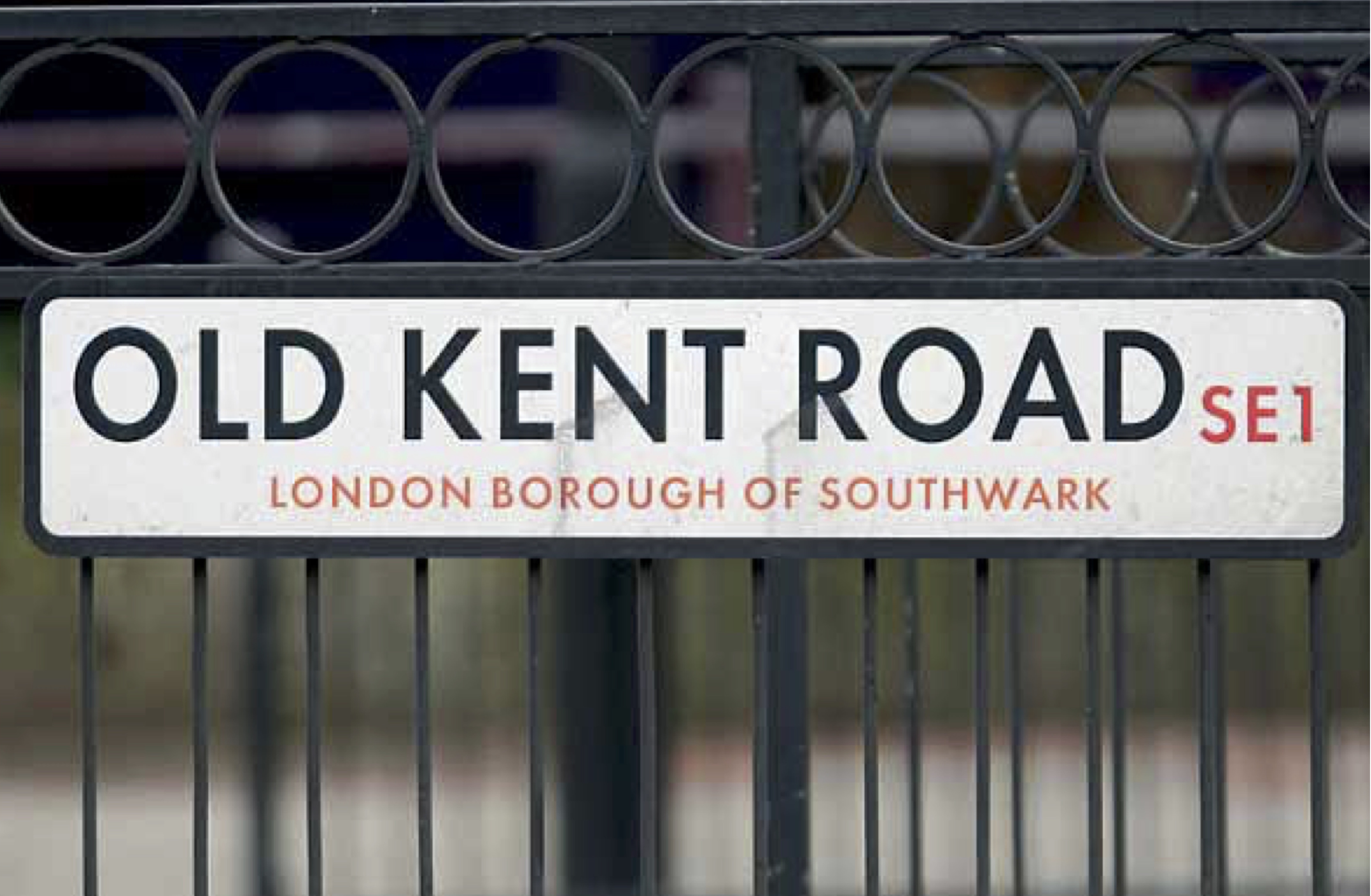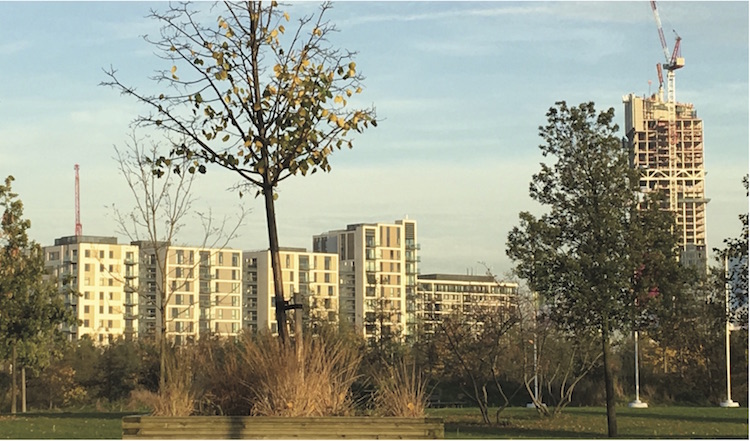Post
ARCHIVE | London's Development Hotspots
19 May 2020
In Journal 470 (autumn/winter 2016) we looked at a medley of the capital's regeneration hotspots – are they turning out to be hits, or are they tarnished by a few bum notes?
Perhaps more than usual, the city is in flux, and flux itself seems the only constant amid these ever-shifting geographies. To launch this issue we focus on four areas whose turn it is to take on the responsibility of regeneration, each at different stages along very similar trajectories. First, there's the legacy of Stratford's Olympic area – a popular new park and vibrant new postcode, but has it kept its affordable housing promises?; then the decades-long saga and multiple false starts of Battersea Power Station as it finally prepares for its first residents. Looking to the future, there's the much maligned Old Kent Road, recently rebranded as a two-mile 'opportunity area'.
There's head-turning world-class architecture but also stories of existing local communities feeling manhandled, pushed out and ignored. Can those projects that still have everything to play for learn from the recent past and allow Londoners to steer these city-defining projects towards their own future rather than one imagined for, or without, them?
Olympic Park housing by Cecil Sagoe
‘Our vision for an Olympic legacy is that within 20 years the residents who will host the world’s biggest event will enjoy the same social and economic chances as their neighbours across London.’
This statement comes from the Olympic host boroughs’ 2009 Strategic Regeneration Framework Report, and indicates their ostensible intent to use the Olympics to bring about positive regeneration outcomes for existing local communities. The framework avows that the supply of new homes in London’s Olympic area must ‘demonstrably respond to social needs’. Indeed, these legacy promises were the central reason why London won the 2012 Olympic bid. But to what extent has this vision been realised?
Charged with delivering this housing objective, and with planning for the wider regeneration of London’s Olympic area, is the London Legacy Development Corporation (LLDC). The LLDC’s establishment in 2012 continues a long trend of using development corporations (the London Docklands Development Corporation and the London Thames Gateway Development Corporation) to deliver large-scale urban development in East London.
The LLDC is planning to deliver in excess of 24,000 homes within its planning boundary, homes it says it will ensure will be ‘accessible to and affordable for a broad spectrum’ of the local community. But, a close look at the LLDC’s affordable housing plans for its planning boundary does make one question the extent to which local housing need will be met.
A 2013 report produced by Opinion Research Services highlights that the LLDC
have an ‘affordable housing requirement of amounting to more than 100 per cent of planned dwelling delivery in the study area’. Yet, the LLDC has only adopted a 35 per cent ‘affordable’ housing target. Congruent with hegemonic planning practice, this target was adopted by the LLDC in light of largely profit-making ‘viability’ considerations.
‘Viability’ considerations – encompassing a requirement for development on the Olympic Park to contribute to paying back the £425m that government borrowed from the Big Lottery Fund in 2007 to help cover the Olympics budget – have also meant that the first two neighbourhoods to be developed as part of the Olympic Legacy Communities Scheme will not meet the LLDC’s ‘affordable’ housing target.
Within Chobham Manor, which will eventually provide 828 homes (and had its first residents move in late 2015), only 28 per cent of housing will be ‘affordable’. Within East Wick, where construction was due to begin in September 2016 to develop approximately 870 homes, only 30 per cent of housing will be ‘affordable’.
The LLDC’s housing plans for some of its existing neighbourhoods are also a source of controversy. For example, following Newham Council’s desires, the LLDC is planning to extensively redevelop the Greater Carpenters Neighbourhood in Stratford. If these provisional redevelopment plans are to go ahead, we will witness another brutal break up of a council housing estate (the Carpenters Estate) within London.
The LLDC’s housing plans have not gone uncontested. Notably, within the Greater Carpenters Neighbourhood a multi-faceted campaign developed by local residents is seeking to ensure that the LLDC’s future plans for Greater Carpenters meet the needs of local working class communities. Indeed, it is likely to be the success of such campaigns that will enable social need, not financial greed, to take centre stage in shaping housing outcomes in London’s Olympic area.
Cecil Sagoe is a geography PhD candidate at University College London. His research focuses on politics and planning for housing within the London Legacy Development Corporation planning area
Battersea Power Station by Peter Watts
For so long London’s best known and most lamented ruin, Battersea Power Station is now one of the most high-profile examples of London’s demographic and architectural transformation as Scott’s masterwork becomes the centrepiece for a contemporary development of high-rise apartments designed by architects of the standing of Foster and Gehry, and aimed squarely at international investors.
The various schemes proposed by different owners since the power station stopped producing electricity in 1983 have always reflected contemporary fads rather than anticipated the city’s future needs, and the current scheme exemplifies the shortcomings of this approach. Moreover, the new buildings – paid for by the Malaysian state property fund – obstruct long-cherished views of the power station for Londoners, while their garish architecture could not be less sympathetic to the understated magnificence of Battersea.
The development is for a mixed-use £8-billion scheme of 3,500 apartments, o ces and shops, with the power station becoming effectively a giant shopping and leisure centre with penthouses, completely surrounded by blocks of flats and hotels. While the first residents are due to move in this year, overall completion will not be until at least 2025.
It didn’t have to be this way of course, but it was likely ever since the building passed from state ownership to private hands with unseemly haste during the privatisation boom of the 1980s, waved on by the fiercely Thatcherite controlling local council. Londoners have awaited Battersea’s rejuvenation for decades, but it now comes at a time when these sort of unimaginative, out-of-scale developments are popping up all over the city. As a result, the power station’s transformation is not being received with much enthusiasm; rather it feels as if a beloved building is being taken from our bosom and handed over to the super rich as a brand or emblem that survives only because it helps them sell flats to each other.
Peter Watts is the author of Up In Smoke: The Failed Dreams Of Battersea Power Station, published by Paradise Road
Old Kent Road by Jessica Cargill Thompson
For decades the Old Kent Road has been little more than a metaphor to most people: the cheapest property on the Monopoly board, an unappealing dull brown encapsulating the cheerless facades of this two-mile, traffic-infested, thoroughfare. Forgotten are its boxing gyms and 20th century music-hall heyday; the fanfares afforded kings as they returned to London triumphant from the continent; the generations of farmers who'd bring hops, fruit and other riches up from the garden of England; the pilgrims whose journeys Canterbury-wards inspired Chaucer.
Until now. The glamorisation of the Elephant & Castle, and the choice of Old Kent Road as TfL's preferred route of the Bakerloo Line extension, not to mention the capital's epic housing crisis, have made developers, councillors and the GLA sit up and take notice. An area of 281ha stretching the full length and both sides of the road has been rebranded as the 'Old Kent Road Opportunity Area' and an ambitious draft Area Action Plan (AAP) disseminated for public consultation. The 20-year vision sets out to provide at least 20,000 new homes and 5,000 new jobs, to transform the Old Kent road into 'a modern boulevard' and to make 'a new piece of the city'. There will be tall, landmark buildings, fewer low-lying retail sheds and windswept car parks, and more green space. Southwark Council Leader Peter John has compared the scale to the size of a new town, and told a New London Architecture conference that it would be 'truly transformational for Southwark and truly transformational for London'.
Housebuilders, investors and developers are understandably very excited. But what of the people who currently live and work around the Old Kent Road? With some 800 businesses and light- industrial units occupying large areas earmarked for residential and mixed use, business owners fearful for their future and have formed business association Vital OKR to make their collective voice heard. Council estate residents worry that they will suffer the same unceremonious fate of the Elephant & Castle's Heygate estate, cast out to the winds, and are slowly uniting as OKR People. Many complain that they simply haven't received any information, and that AAP documents are largely incomprehensible to the lay person (and even some architects).
At a community event during this year's London Festival of Architecture, the dismissal of the Old Kent Road as an area with not much going for it was countered with the forceful slogan: 'This is not nothing.'
The transformative potential of the coming developments is not in question, likewise the need for attention, if only to the road itself, and their ripples will be felt across Southwark.
What is in question is whether the planners can achieve their aim of turning a two-mile stretch of the A2 into a 'place', whether such a varied area can be brought together under a broad Old Kent Road identity, and whether the local residents, businesses and stakeholders can muster the collective might to ensure that the Opportunity Area is a genuine opportunity for themselves as well as outside agents.


